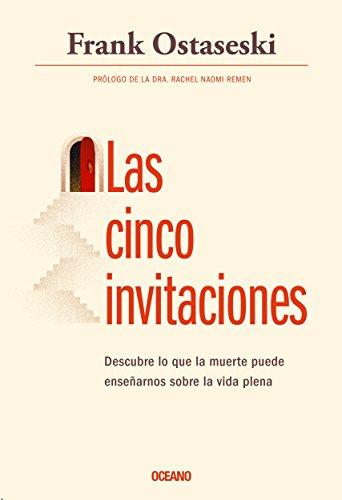
Los seres humanos hemos sofisticado bastante una de las capacidades que nos han traído hasta aquí: el aprendizaje. Sin embargo nadie nos enseña formalmente a amar, manejar emociones, decidir o tomar consciencia. Tampoco a morir.
Como médico me interesa mucho la muerte. Se supone que todo lo que hago va dirigido a retrasarla. Tampoco los profesionales de la salud hemos recibido formación para ayudar a otros a morir. Es verdad que sabemos de cuidados paliativos y tenemos técnicas y medicaciones que facilitan el proceso de morir, pero hay aspectos cualitativos que no están presentes en la formación académica ni tampoco en la práctica clínica. Sabemos poner morfina subcutánea pero no se nos da tan bien el acompañamiento o la facilitación de este tiempo de vida tan delicado.
Tras terminar de leer Las cinco invitaciones de Frank Ostasesky lo primero que me surge es recomendar vehementemente su lectura. El autor dirige un hospicio en San Francisco donde lleva acompañando personas en el final de la vida desde hace treinta años. El libro resume su valiosa experiencia y permite que cada cual se acerque a su propia vida e impermanencia a su manera. Es una obra honrada escrita en primera persona donde queda clara la calidad humana del autor. No esperen recetas ni charlas magistrales, tan solo cinco sencillas invitaciones:
Merece la pena atreverse a mirar a la muerte para arriesgarnos a tener una vida plena. El autor nos lo sugiere con el texto. Como lector doy fe de que se puede mirar la propia levedad cuando alguien nos da la mano y con paciencia facilita que nos hagamos las preguntas adecuadas.
How can we learn to die?
We human beings have sophisticated enough one of the capabilities that have brought us here: learning. However, no one formally teaches us to love, manage emotions, decide or become conscious. Nor to die.
As a doctor, I'm very interested in death. Everything I do is supposed to slow it down. Nor have health professionals been trained to fully help others die. It is true that we know about palliative care and we have techniques and medications that facilitate the process of dying, but there are qualitative aspects that are not present in academic training or clinical practice. We know how to use subcutaneous morphine but we are not as good at accompanying or facilitating this delicate lifespan.
After I have finished reading The Five Invitations of Frank Ostasesky, the first thing that comes to mind is to strongly recommend his reading. The author directs a hospice in San Francisco where he has been accompanying people at the end of life for thirty years. The book sums up their valuable experience and allows everyone to approach their own life and impermanence in their own way. It is an honest work written in the first person where the human quality of the author is clear. Don't expect recipes or masterly talks, just five simple invitations:
- Don't wait.
- Welcome everything, without rejecting anything.
- Bring your whole being to the experience.
- Find a resting place in the middle of events.
- Cultivate a don't know mind.
It is worthwhile to dare to look at death to gain a full life. The author suggests it with the text. As a reader, I attest that one can look at one's own impermanence when someone gives us a hand, and patiently helps us to ask ourselves the right questions.
